By Alex Trukan
Typical penetration in behind the opposition’s back line involves a striker or a winger running off defenders’ shoulder to a well-timed pass. This approach, however is relatively easy to defend against as striker remains within defender’s vision and his starting position is predictable. Much more complex to defend against are forward runs from deeper positions. Central midfielders could be looking to make runs in behind the back line and threaten spaces in behind. These types of movements start within the midfield areas and therefore cause a problem who should track the runner. Defenders would also already have a striker to mark so they will have to make a decision whether to follow the midfield runner or stay with a striker.
First step for a midfielder before he makes a run is to recognise triggers when to do it. One of the important triggers might be certain player getting on the ball with no pressure around. Another component is to have a striker or strikers in front who will occupy one or ideally two opposition’s defenders. Without this, defenders will easily track the midfielder runner and cut the forward pass.
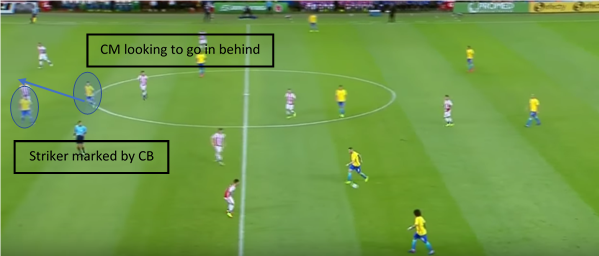
As centre midfielder starts to make a run, he will often be already in front of the opposition midfielder. Opposition midfielder will react and follow the run initially anyway even if it’s then passed on to the centre back. This will obviously create an option to go in behind but also a gap in midfield which can be exploited by one of the strikers coming deeper to receive.
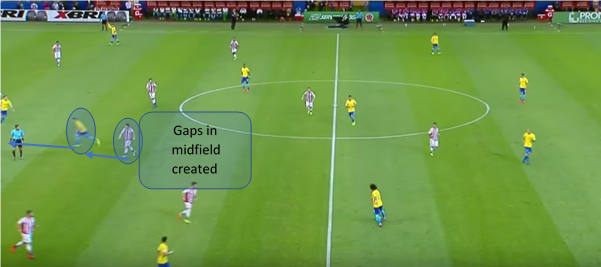
Forward run of central midfielder can also create space for somebody else to drive into. This is popular within a counter attack when there is a corridor created for player on the ball by recovering players. As it can be seen below, even before the player gets on the ball, other centre midfielder has already started his run.
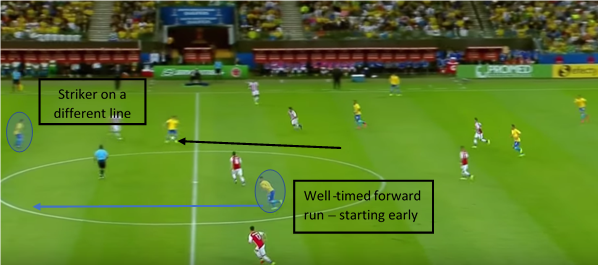
Another option shown below is a third man type of run in behind. In this case centre midfielder would have already started the run as the ball is played between two other players to then get it transferred into the runner. This created additional space in behind as the second player in the chain will attract pressure, especially if he plays beyond the midfield unit.
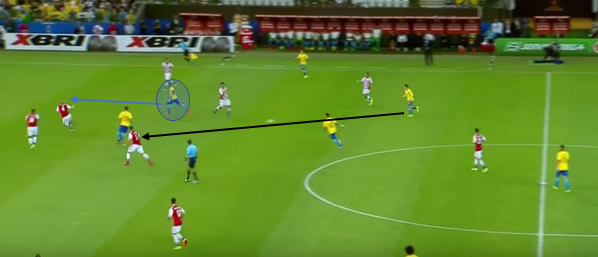
As the pass is played into the second player in the chain, the player that has just passed the ball has to follow forwards as well. This will create a situation with at least three players posing a threat to go in behind. Opposite side winger/striker should be looking to stay away from the ball and drag opposition full back or second centre back as far away from the ball as possible to create gaps.
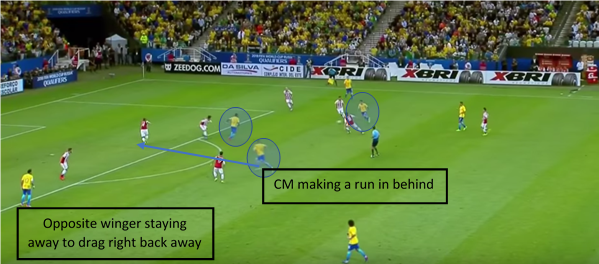
As the central midfielder is making a run in behind the back line, the quality of the pass is crucial. Players should be able to do different types of passes to suit various situations: outside of the foot, inside of the foot, with a spin, driven, lofted or chipped. This will ensure that the runner can be found with a pass.
By Alex Trukan, Development Coach, Nottingham Forest
@AlexTrukan


